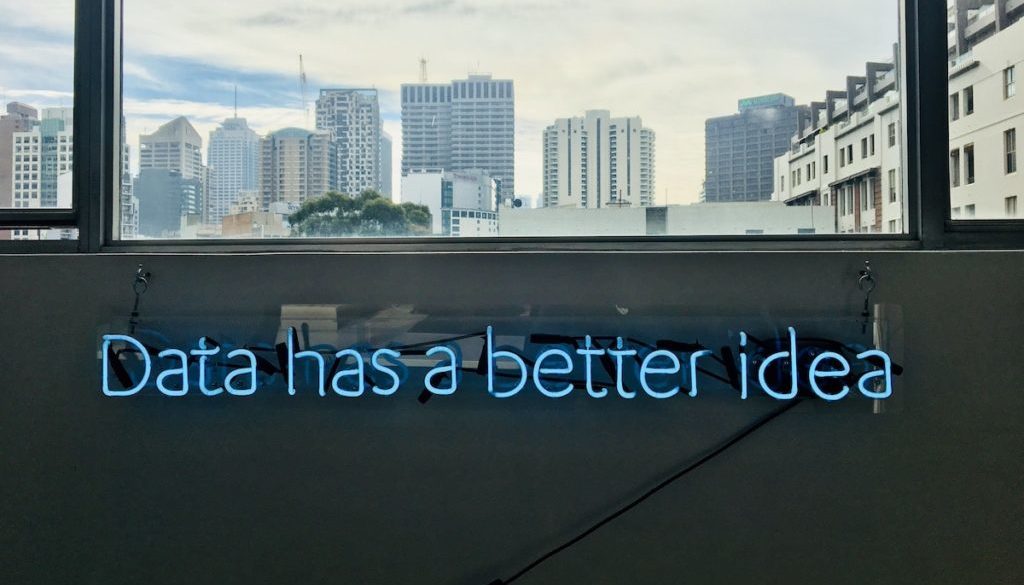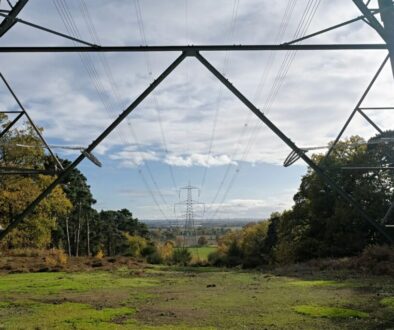Building a rural data visualisation community?
While many people are familiar with terms such as data collection, data storage and data analysis, there has often been a gap in how we extract information and present it in meaningful ways for different audiences. ‘Data visualisation’ is changing that, providing an integrated means of letting people explore data. We spend months, years, often decades, collecting data so it makes sense to consider how we process, analyse, present and disseminate our findings. What does data visualisation mean for rural communities? Jessica Sellick investigates.
What is data visualisation? Back in 1987 the National Science Foundation described it as “a method for seeing the unseen. It enriches the process of scientific discovery and fosters profound and unexpected insights…all people with normal perceptual abilities are predominantly visual” (page 7).
This graphic representation of quantitative information can be traced back to the earliest map making (for navigation and exploration) and cartography (I’m thinking here of Charles Booth’s 1889 poverty map); statistics, medicine and other fields. Along the way, developments in technologies (printing), empirical recording (i.e., numbers pertaining to people gathered in large and periodic series) enabled the wider use of graphics. From maps, diagrams and graphs that were initially hand-drawn (piece by piece) then etched onto copper-plate; through to computer software. Different types of sub-fields of data visualisation have emerged. Information visualisation uses tables, graphs, maps through to files and lines of code in software systems to depict large-scale collections of information. Cartographic visualisation concentrates on the spatial domains, tables and graphs on statistical analysis. And scientific visualisation is concerned with the depiction of architectural, meteorological, medical and biological phenomena – presenting volumes, surfaces and other data components such as time and distance. There is of course overlap between all of these strands, for they share a common history.
In essence, data visualisation is a broad term used for presenting information in a visual way; both numerical and non-numerical data in static or interactive graphics. While it is not new, our desire to find new ways to help us make sense of information continues to grow. As technology has developed and moved on it has become easier for anyone to create and/or share data visualisations.
Why use data visualisation? We collect lots of raw data (often called source data, primary data or atomic data); and analysing this data and then presenting it visually can help people interact with the information and understand what is happening in ways that might not be apparent if they were to look at raw data or read a long text. So data visualisation makes data more accessible to people internally within an organisation (e.g. to see patterns or trends) and to external, non-specialist, audiences. It can, for example, help Governments, organisations or businesses to make decisions (e.g. to understand the outcomes of public policy or customer preferences) or to pinpoint emerging trends (i.e., comprehending information quickly, identifying relationships and patterns, and communicating this to others in bitesize chunks). Examples of data visualisation in academic circles includes work undertaken by the LSE library; in policy circles work undertaken by the National Audit Office (NAO) on infographics and interactive data-sets , DWP’s sketchnoting; and Defra’s Data Programme; and in the voluntary & community and charitable sectors such as work by Citizens Advice. All of these examples seek to enhance the ways in which we collect, process, understand, present and disseminate data.
There are lots of advantages to data visualisation and its use has been taken up widely. Indeed the top trends for 2018 include an estimated 39% increase in demand for data scientists and data engineers over the next three-years – but also an expectation among employers that all employees will become familiar and comfortable with data. This points towards a continued growth in tools and resources to make the benefits of data visualisation more accessible to everyone. The top trends also identify how open data provides opportunities for organisations to enhance their own data and draw new insights.
It is also worth noting that many RSN members have not / do not receive any formal training in data visualisation: for many of us presently rely upon statistical packages with limited visualisation capabilities (e.g. spreadsheets, word processing programmes) and/or by the software to which we can access and/or afford. Similarly, the variety of data types that exists means finding the most appropriate means of illustrating this diversity can be a challenge. And because data visualisation only presents snapshots of larger projects/documents it raises doubts about the reliability of findings (i.e., is the purpose to persuade people of a particular point of view and/or represent an entire dataset?) While a range of digital tools are available (and emerging), sometimes external support is required to explore the data and designs.
If data visualisation is becoming increasingly important, where do you start? Answering this question depends on what data you are collecting or hold; how and why you want to present data visually: who are your intended audiences? What are the key points you want the visualisation to raise? How much detail needs to be presented? How can this data be shared in a meaningful way with the audience(s) you want to target? Is the data you are using quantitative or qualitative?
Having responses to these questions can assist in guiding when, what and how to present the data. For example, this may include developing images which show facts and figures; or bar charts showing comparisons or ranks; or line graphs showing changes over time; or maps showing geographical spread; or word clouds showing text analysis. There are numerous good practice guides and examples of how organisations have approached it.
If we were to think about data visualisation in the context of rural England: what data might we want to collect, process and present? For me, it would afford bringing together data about what it is like to live and work in rural England. For example, this could include data about (in no particular order): housing stock, condition and affordability; broadband and mobile connectivity, speed and cost; level of poverty (for individuals, children, people of working age and older people); access to transport (car ownership, public transport, community transport schemes); demographic profile (while the proportion of older people living in rural areas is higher than in urban areas, does it become more difficult to live in a rural place when you are no longer able to drive / need to access health and care services?); stock of jobs, sectors, pay, employment levels, economic inactivity; and/or access to public services (e.g. primary care, secondary care, social care, ambulance, primary school, secondary school, FE college, post office, library, Jobcentre etc.). Within each or all of these data strands it would be interesting to analyse and visualise: (i) funding: how much does it cost to deliver, how much money is being spent and by whom; (ii) sparsity: using the Rural Urban Classification, how does the analysis vary according to whether you are near a town, in a sparse setting or isolated setting – and how does it compare to urban areas? (iii) Projections – what happens if you project the data over 5, 10, 20 years: does it become easier, stay about the same, or more difficult to live in rural England? (iv) Comparators – how does this data compare to rural areas in Scotland, Wales and Northern Ireland? I’m sure RSN members will have their own thoughts and perspectives to add to this starting list…
While charts and graphics are powerful tools for communication, many organisations are yet to benefit from them. Their potential for understanding rural England is huge for as we become more exposed to data, visualisation provides a practical means of improving our understanding of what it shows. This presents opportunities to increase the visibility of rural England to Government, policy and decision makers, voluntary and community sector organisations, charities and businesses. How can we use data visualisation to generate further interest in all things rural? Equally, I am mindful that if we are going to use data visualisation to present information about rural England, we need to ask ourselves whose story we are telling and for what purpose…
………………………………………………………………………………………………..
Jessica is a researcher/project manager at Rose Regeneration and a senior research fellow at the National Centre for Rural Health and Care. Her current work includes helping public sector bodies to measure social value; evaluating a mobile sensory project; and undertaking a piece of work on migration. In her spare time Jessica sits on the board of a housing association. She can be contacted by email jessica.sellick@roseregeneration.co.uk or telephone 01522 521211. Website: http://roseregeneration.co.uk/ Blog: http://ruralwords.co.uk/ Twitter: @RoseRegen



